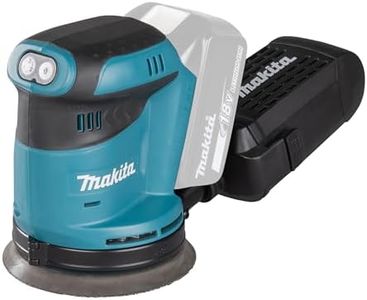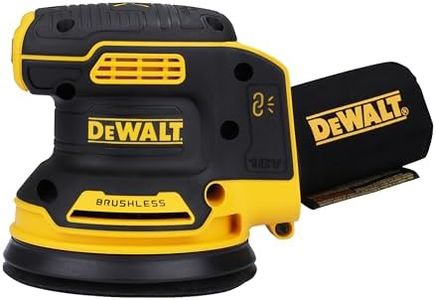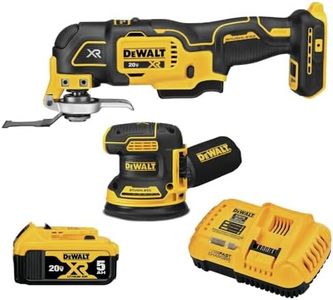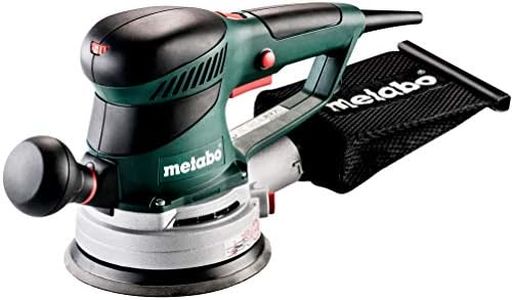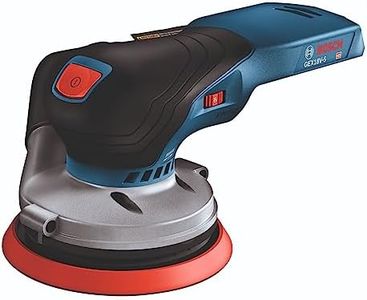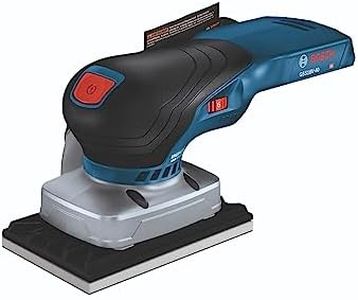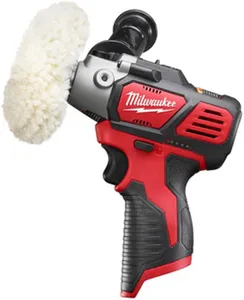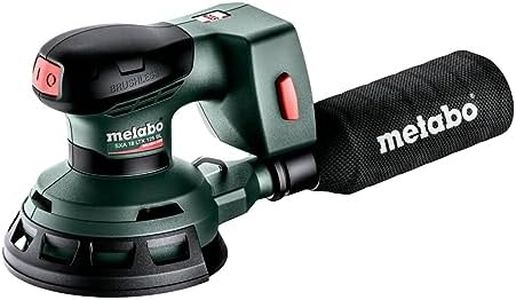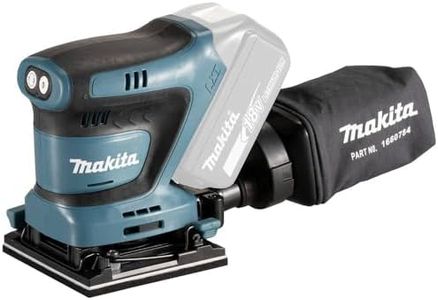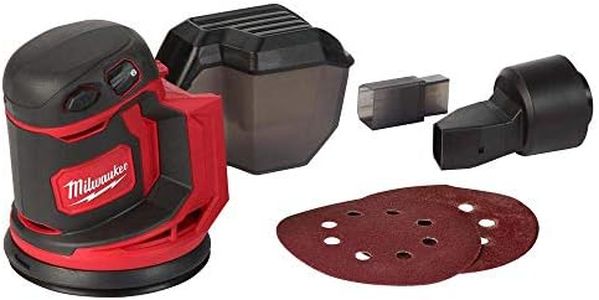We Use CookiesWe use cookies to enhance the security, performance,
functionality and for analytical and promotional activities. By continuing to browse this site you
are agreeing to our privacy policy
10 Best Hand Sanders
From leading brands and best sellers available on the web.Buying Guide for the Best Hand Sanders
When choosing a hand-sander, it's important to think about the types of projects you plan to tackle and the materials you'll be working with most often. The right hand-sander can make a big difference in how efficiently and cleanly you achieve your results, whether you're smoothing wood, prepping walls, or refinishing furniture. Understanding the key features that define different sanders will help you make a confident choice tailored to your needs.Type of hand-sanderThe main types of hand-sanders are orbital, random orbital, detail (or mouse), and belt sanders. Each type is designed for different tasks. Orbitals are great for general smoothing, random orbitals for swirl-free finishes and versatile material removal, detail sanders for tight corners and fine work, and belt sanders for heavy-duty, fast material removal. Think about what surfaces and projects you usually work on—fine finishing, tight spaces, or heavy stock removal—and let that guide your choice.
Power SourceHand-sanders can be corded, cordless (battery-powered), or even manual. Corded models offer consistent power and are good for big jobs without worrying about charging, while cordless ones offer freedom to move, making them ideal for harder-to-reach places or outdoor work but may need recharging during long projects. Choose the power source based on your workspace setup and how often you’ll need to move around during your sanding tasks.
Sanding Surface SizeThe size of the sanding pad or belt determines how quickly you can cover an area. Larger pads or belts are better for big, flat surfaces, allowing you to finish quicker, while smaller ones give more control for fine work or getting into tight spots. If you usually work on furniture or small projects, a smaller surface may be ideal. For floors, tables, or doors, larger surfaces make the job faster.
Speed SettingsSome hand-sanders have variable speed settings, allowing you to adjust how fast the pad or belt moves. Lower speeds are more gentle and good for delicate work, fine between-coat sanding, or finishing, while higher speeds can remove material faster but may be too aggressive for some surfaces. Pick a sander with variable speed if you plan to do a range of tasks or need more control based on the material.
Dust CollectionDust collection refers to the ability of the sander to minimize the mess by collecting dust in a bag, canister, or through a vacuum connection. Good dust collection keeps your workspace cleaner, reduces airborne dust, and helps you see your progress better. If you work indoors or are sensitive to dust, prioritize models with effective dust collection systems.
Weight and ErgonomicsThe comfort and weight of a hand-sander impact how easy and pleasant it is to use, especially for long periods. Lighter, well-balanced tools with easy-to-hold grips are less tiring, while heavier sanders may offer more control in certain stock removal tasks but can tire you out quickly. Try to pick a sander that feels comfortable to hold and matches the duration and intensity of your typical projects.
Changing SandpaperEasy sandpaper changing systems, such as hook-and-loop (Velcro) or convenient clamps, can save time and hassle when switching between grits or replacing worn paper. If your projects often require shifting between different sandpaper types, look for a sander designed to make changes fast and simple.
